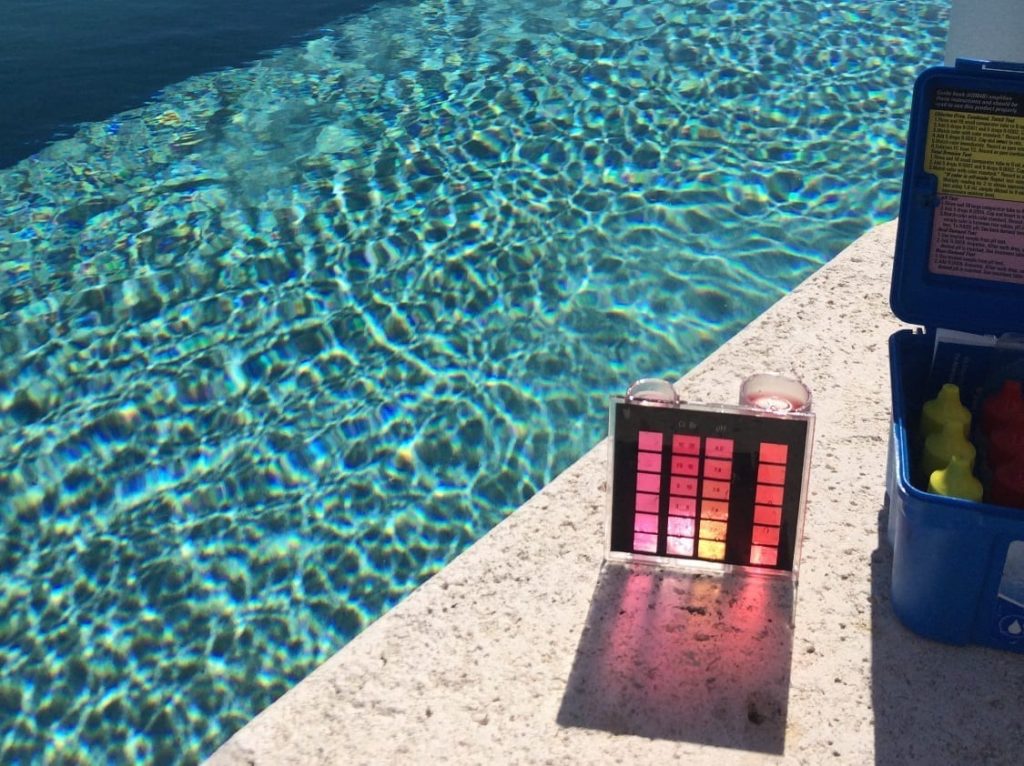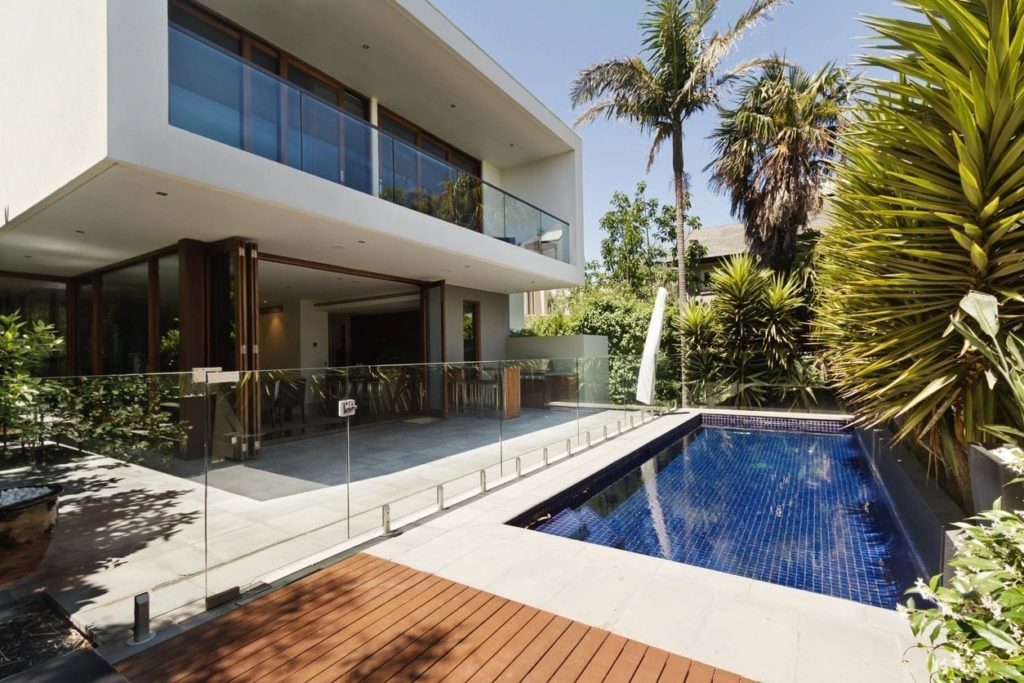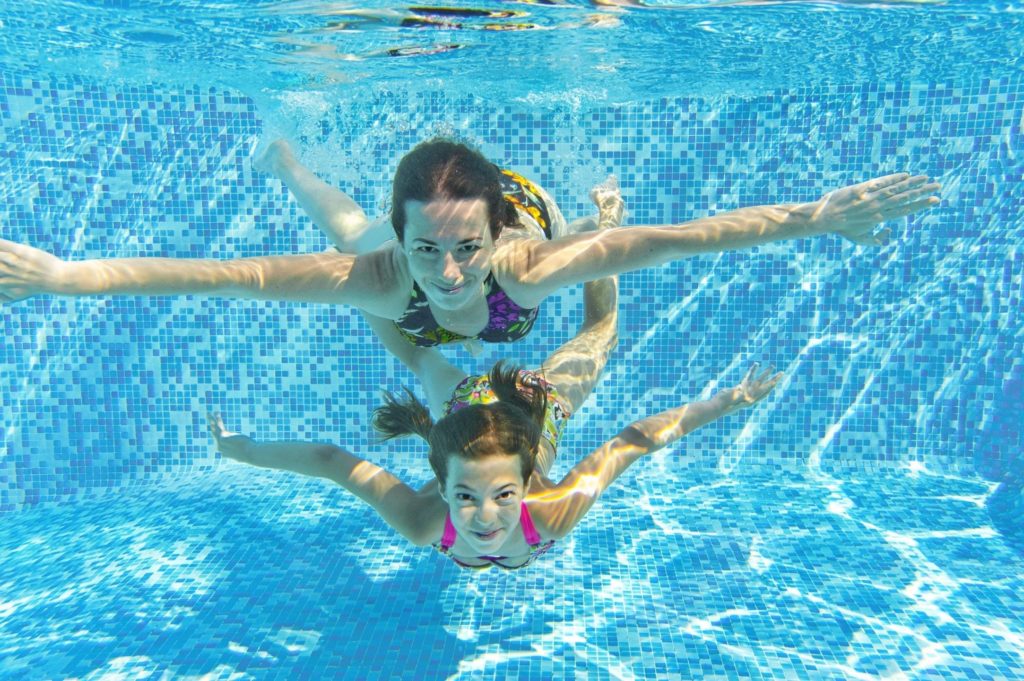Properly balanced pool water is the secret behind a crystal clear swimming pool.
According to the Census Bureau, swimming is the most popular recreational activity for kids 7 to 17. Swimming is also the fourth most popular sport or activity in the US. You might as well be one of the more than 10.4 million residential pool owners in the United States, according to the Association of Pool & Spa Professionals. Or you might be thinking of buying a house that happens to have a pool. If this is the case today I will give you some basic information on how to keep your swimming pool crystal clear.
Besides the obvious physical part of removing the organic material that falls into your swimming pool, keeping the pool chemicals balanced is the key not only to have a neat looking pool but a safe pool as well. Did you know that 1 in 5 American adults aren’t aware that swimming while sick with diarrhea can contaminate the water and make other swimmers sick? Yeah, here is when the first one of the three basic components of properly balanced pool water comes into play. Chlorine! The other two are pH and stabilizer, which will talk about those later.
Chlorine acts as a sanitizer killing algae and dangerous bacteria. Chlorine levels should be kept at 2 to 3 parts per million or ppm, if so it will take less than a minute for the chlorine in your swimming pool to kill most bacteria like the terrifying E.Coli, according to the CDC. A few contaminants are more resistant, like the Hepatitis A virus, it will be dead after 16 minutes. How do you know what are the chlorine levels in your pool?
Here is when a test kit like this comes in handy. Simply follow the instructions, which involve taking a sample of your pool water and adding reacting chemicals or reagents to it. They will turn the water a certain color and then you compare it to the provided sample scale.
Let’s talk now about the second aspect of pool water balance: pH. From your high school of college chemistry classes, you might remember the pH scale that goes from 0 to 14, 0 being acidic, 7 neutral and 14 basic or alkaline. You must maintain a good pH level or your chlorine will not work effectively. The level should be between 7.2 and 7.6. If the pool water is too acidic (a low pH reading of less than 7.2) it can corrode the metals and equipment in your pool. If the pool water is too basic (a high pH reading of 7.8 or more) it could cause cloudy water and skin and eye irritation. To correct an acidic pool water reading you add sodium bicarbonate, and to correct a basic pool water reading you add muriatic acid.
The final aspect of proper pool balance is cyanuric acid, also known as stabilizer or conditioner. It forms a protective bond around chlorine, making it more resistant to being burned off by the sun. Proper levels should be around 35 parts per million. The lower limit is 10 ppm and the higher is 100 ppm. To meet health codes, pools above 100 ppm need to be drained of about 20% of volume, and fresh water added. To give you an idea, four pounds of cyanuric acid will offer a reading of 50 ppm in 10,000 gallons of water. The standard 15 x 30 pool has 13,000 gallons of water.
There are more components of proper pool balance like total alkalinity and water hardness, but we are going to leave those for an advance pool chemistry class. For now, if you are eyeing that cool house with the outdoor kitchen and a swimming pool all you need to remember are these three things: keep chlorine at 2 – 3 ppm, pH at 7.2 – 7.6 and stabilizer at 35 ppm. I hope you have found this information helpful. If you are more confused than before, simply give us a call, will take care of balancing the pool water and all of the pool cleaning and maintenance, so you can relax and enjoy it. Click here to get a free estimate on our weekly pool cleaning service. Happy swimming!






